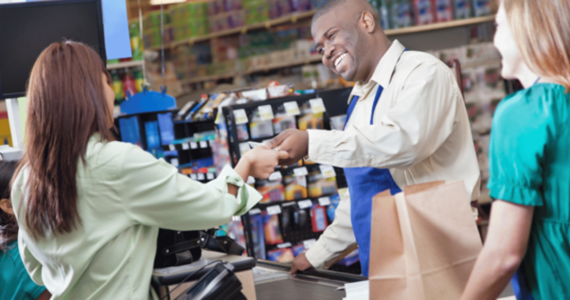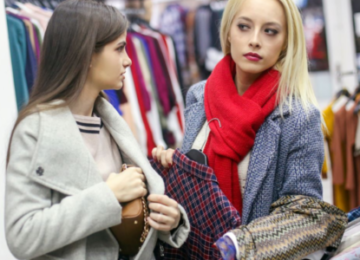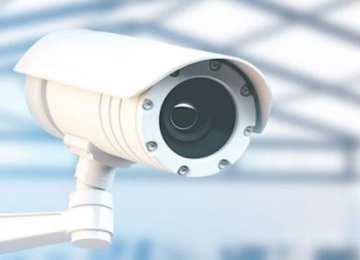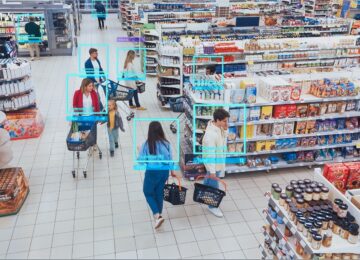In-store cameras: security and customer privacy

Video surveillance is part of the security system in many shops, whether local shops or supermarkets. But how do you reconcile security, protection of personal data and respect for customers' privacy? Here's a look at the points to bear in mind when using surveillance cameras.
Why install a video surveillance system in a shop?
In recent months, inflation and the cost of living have led to an increase in shoplifting. For retailers, this crime is the primary cause of shrinkage. Shrinkage is very costly for businesses: over €7 billion every year in France. The result is a negative impact on sales, and retailers are looking for solutions to prevent it.
The presence of video surveillance cameras in a shop can help to reinforce the security of goods and people. This type of device has a dissuasive effect on people who might be tempted to steal items from the shelves. Video surveillance can also be used to catch malevolent people in the act of theft.
The simplest solution is to install surveillance cameras. But depending on the size of the shop, you will also need to recruit staff to monitor the screens. These security staff will also be responsible for intercepting individuals suspected of theft. To carry out these operations successfully, security guards need to be able to rely on evidence, such as video recordings.
But the human eye is not infallible: there can be misunderstandings or missteps. This is why the use of artificial intelligence (AI) coupled with the installation of cameras can be a great help in preventing shoplifting. Thanks to the constant analysis offered by this type of device, security is enhanced.
The installation of this comprehensive security system is compatible with respect for personal privacy. Useful installations for both people and property.
Instructions on the layout of surveillance cameras to respect customers' privacy in France
The CNIL (Commission Nationale de l'Informatique et des Libertés) reminds retailers that there are security regulations governing video surveillance in shops. These regulations apply to places open to the public. There are a number of instructions to bear in mind.
Apply to the Prefect for prior authorisation
Before installing any surveillance cameras in a shop, the manager must apply for prior authorisation. A form must be completed and sent to the prefect of the département or the prefect of police in Paris. The application is first examined by the departmental video-protection commission, which has 3 months to give its opinion (the maximum period can sometimes be as long as 4 months in some cases). If authorisation is granted, the applicant is obliged to declare the commissioning of the video surveillance system to the relevant prefecture.
Informing staff and customers of the presence ofsurveillance cameras
If the retailer works with staff, he must inform the representative bodies of his intention to install cameras in the workplace. The CNIL points out that it is strictly forbidden for employers to use video surveillance to monitor the work of staff.
Customers must be informed of the installation of surveillance cameras in the shop. A sign must be permanently displayed with clearly legible information:
- Purpose of processing and data retention period ;
- Reminder of customers' rights with regard to personal data and data protection;
- Person to contact to exercise right of access to images.
Places where it is strictly forbidden to install cameras
Retailers are not free to install cameras wherever they wish. Under the Criminal Code, cameras are strictly forbidden in fitting rooms and toilets. The CNIL recommends that cameras be installed in traffic areas and shopping areas.
Persons authorised to view images
The images must not be freely accessible. Only the shop manager and the security department may view them. The CNIL states that it is possible to install a live viewing screen, visible to all, at the entrance to the shop.
Retentionperiod for recorded images
The length of time images and video recordings are kept must take account of the purposes for which they are processed. The CNIL points out that, generally speaking, a few days are sufficient to carry out checks. It recommends a maximum retention period of one month.
Using artificial intelligence to detect gestures associated with potential theft
This technology is compatible with the protection of customer privacy, as it is in no way a surveillance system based on facial recognition.
How does AI in surveillance cameraswork ?
A traditional in-store video surveillance system essentially relies on cameras and a video recorder, all controlled by security staff. To help security guards detect possible shoplifting, AI analyses people's movements in real time. So it's not a question of analysing customers' faces to identify them.
In practical terms, it involves installing the Veesion software on the video recorder and configuring it as required (24/7). The software can be adapted to one or more cameras, depending on the system installed in the shop. A surveillance camera must therefore already be installed. An algorithm is used to analyse live video surveillance images. It is based on three components:
- Detection of human presence;
- Locating the individual's body parts;
- Recognition of objects of interest. Objects of interest are those likely to contain concealed items (a shopping trolley, rucksack, shopping bag or handbag).
This technology studies the likelihood of the gestures being associated with a shoplifting attempt.
Detection of anomalies for intervention by security staff
When there is a high probability of shoplifting (in progress), this constitutes an anomaly. A video alert is then sent in real time to the person in charge of security and authorised to intervene with the suspected individual.
The security guard can, if he or she wishes, intervene in the shop or at the checkout. Thanks to AI, on the one hand, he increases his ability to protect the shop from shoplifting and, on the other, he can react quickly. The video recordings constitute evidence that the agent can present to the suspect.
Protection of personal privacy
Video alerts sent by AI to security personnel are automatically deleted after 30 days. This period can be reduced at the request of retailers using the software.
As has already been pointed out, AI is not interested in customers' faces. It is therefore not possible to recognise people who regularly visit the shop.
AI cannot tell a retailer the identity of a person who frequents his shop, or even set up an identification search using a customer file.
In conclusion, it is possible to combine security and respect for customer privacy in a shop. However, the installation of cameras must comply with regulations and the law. Developers of AI used for video protection in shops are well aware that it is imperative to protect personal data. For example, the use of AI to analyse images is compatible with people's privacy, as it can never be used to identify them: this technology is concerned with so-called "theft" gestures.
The most popular
Related news
Discover what Veesion can do for you. Do you have one or more stores?
Our team will contact you within 48 hours





